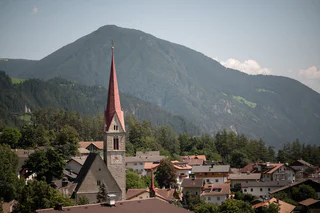
1/4
Maria Trens Pilgrimage Church
Trens/Trens, Freienfeld/Campo di Trens, Sterzing/Vipiteno and environs
Trouve tous les lieux de pèlerinage du Sud-Tyrol en un coup d'œil

1/4
Trens/Trens, Freienfeld/Campo di Trens, Sterzing/Vipiteno and environs

1/4
Varna/Vahrn, Vahrn/Varna, Brixen/Bressanone and environs

Senale/U.L. Frau i.W., U.L.Frau i.W.-St. Felix/Senale-S.Felice, Meran/Merano and environs

1/2
Nova Ponente Centro/Deutschnofen Dorf, Deutschnofen/Nova Ponente, Dolomites Region Eggental

San Leonardo i.P./St. Leonhard i.P., St.Leonhard in Passeier/San Leonardo in Passiria, Meran/Merano and environs

1/4
Caminata di Tures/Kematen, Sand in Taufers/Campo Tures, Ahrntal/Valle Aurina

1/2
Valdurna/Durnholz, Klausen/Chiusa, Brixen/Bressanone and environs

1/4
Bressanone dintorni/Brixen Umland, Brixen/Bressanone, Brixen/Bressanone and environs

1/3
Badia/Badia, Badia, Dolomites Region Alta Badia

1/3
Badia/Badia, Badia, Dolomites Region Alta Badia

1/4
Casere/Kasern, Prettau/Predoi, Ahrntal/Valle Aurina

1/2
Martello/Martell, Martell/Martello, Vinschgau/Val Venosta

1/3
Rifiano/Riffian, Riffian/Rifiano, Meran/Merano and environs

1/5
Burgusio/Burgeis, Mals/Malles, Vinschgau/Val Venosta

S. Michele/St. Michael - Appiano/Eppan, Eppan an der Weinstaße/Appiano sulla Strada del Vino, Alto Adige Wine Road

1/2
Pieve di Marebbe/Enneberg Pfarre, Al Plan/San Vigilio, Dolomites Region Kronplatz/Plan de Corones